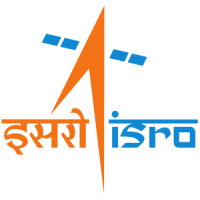/
Chandrayaan-3
Launch Success
Liftoff Time (GMT)
09:05:17
Friday July 14, 2023
Watch Replay
Official Livestream
Mission Details
Read Article
Launch Notes
First soft lunar landing near the Lunar South Pole. ISRO became the world's fourth space agency to conduct a soft lunar landing after the former USSR, NASA, and CNSA.
Chandrayaan-3
Chandrayaan-3 is the third lunar exploration mission by the Indian Space Research Organisation (ISRO). During Chandrayaan-2, a snag in communication led to the failure of a soft lunar landing attempt. Chandrayaan-3 is a mission repeat of Chandrayaan-2. Chandrayaan-3 consists of an indigenous Lander module (LM), a Propulsion module (PM), and a Rover with the objective of developing and demonstrating new technologies required for Interplanetary missions. The Lander will have the capability to soft land at a specified lunar site and deploy the Rover which will carry out in-situ chemical analysis of the lunar surface during the course of its mobility. The main function of the PM is to carry the LM from launch vehicle injection to the final lunar 100 km circular polar orbit and separate the LM from the PM. Apart from this, the Propulsion Module also has one scientific payload as a value addition which will be operated post-separation of the Lander Module. The launcher will place the integrated module in an Elliptic Parking Orbit (EPO) of size ~170 x 36500 km. The lander's payloads include Chandra’s Surface Thermophysical Experiment (ChaSTE) to measure thermal conductivity and temperature; the Instrument for Lunar Seismic Activity (ILSA) for measuring the seismicity around the landing site; Langmuir Probe (LP) to estimate the plasma density and its variations, and finally, a passive Laser Retroreflector Array from NASA accommodated for lunar laser ranging studies. The rover contains an Alpha Particle X-ray Spectrometer (APXS) and Laser Induced Breakdown Spectroscope (LIBS) for deriving the elemental composition in the vicinity of the landing site.
Elliptical
1 Payload
3,900 kilograms
Launch Site
Stats
LVM-3
7th
Mission
2nd
Mission of 2023
Indian Space Research Organisation
89th
Mission
5th
Mission of 2023
2023
104th
Orbital launch attempt

